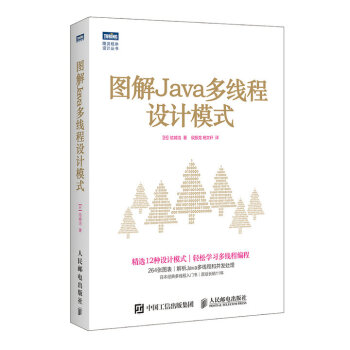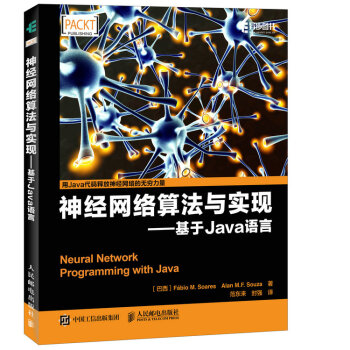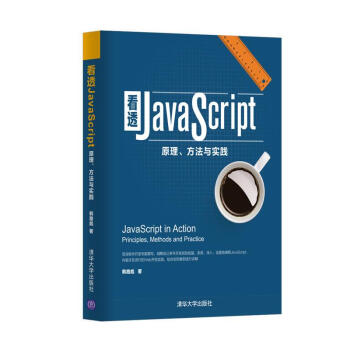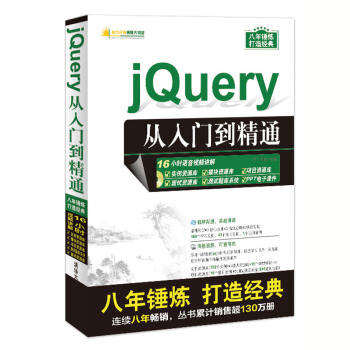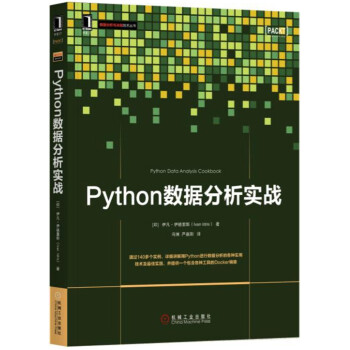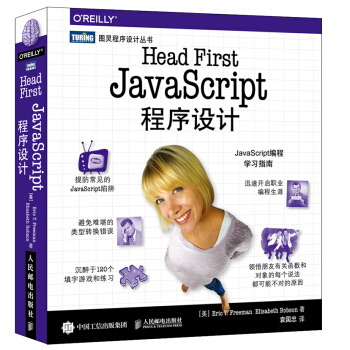![数据结构与算法分析 C++语言描述(第四版)(英文版) [Computer Networks and Internets, Sixth Edition]](https://pic.tinynews.org/12164785/59a4da58N25915731.jpg)

具体描述
编辑推荐
适读人群 :本书概念清楚,逻辑性强,内容新颖,适合作为大专院校计算机软件与计算机应用等相关专业的双语教材或参考书,也适合计算机工程技术人员参考。本版特色如下:
*书中的阐述和算法均用C++新标准C++11的代码实现。
*unordered_map两个类模板的简要讨论。
*增加了基数排序和与选择相关问题下界的证明。增加了对AVL树删除算法的实现。使用新的union/find分析同时改进此前各版的较弱的O(Mlog*N)界。
内容简介
本书是数据结构和算法分析的经典教材,书中使用主流的程序设计语言C++作为具体的实现语言。书中内容包括表、栈、队列、树、散列表、优先队列、排序、不相交集算法、图论算法、算法分析、算法设计、摊还分析、查找树算法、后缀数组、后缀树、k-d树和配对堆等。本书把算法分析与C++程序的开发有机地结合起来,深入分析每种算法,内容全面、缜密严格,并细致讲解精心构造程序的方法。
作者简介
Mark Allen Weiss,佛罗里达国际大学计算与信息科学学院教授、副院长,本科教育主任和研究生教育主任。他于1987年获得普林斯顿大学计算机科学博士学位,师从Bob Sedgewick。他曾经担任全美AP(Advanced Placement)考试计算机学科委员会的主席(2000-2004)。Weiss教授在数据结构和算法分析方面卓有建树,他的数据结构和算法分析的著作尤其畅销,并受到广泛好评.已被世界500余所大学用作教材。
目录
Chapter 1 Programming: A General Overview 1
1.1 What’s This Book About? 1
1.2 Mathematics Review 2
1.2.1 Exponents 3
1.2.2 Logarithms 3
1.2.3 Series 4
1.2.4 Modular Arithmetic 5
1.2.5 The P Word 6
1.3 A Brief Introduction to Recursion 8
1.4 C++ Classes 12
1.4.1 Basic class Syntax 12
1.4.2 Extra Constructor Syntax and Accessors 13
1.4.3 Separation of Interface and Implementation 16
1.4.4 vector and string 19
1.5 C++ Details 21
1.5.1 Pointers 21
1.5.2 Lvalues, Rvalues, and References 23
1.5.3 Parameter Passing 25
1.5.4 Return Passing 27
1.5.5 std::swap and std::move 29
1.5.6 The Big-Five: Destructor, Copy Constructor, Move Constructor, Copy
Assignment operator=, Move Assignment operator= 30
1.5.7 C-style Arrays and Strings 35
1.6 Templates 36
1.6.1 Function Templates 37
1.6.2 Class Templates 38
1.6.3 Object, Comparable, and an Example 39
1.6.4 Function Objects 41
1.6.5 Separate Compilation of Class Templates 44
1.7 Using Matrices 44
1.7.1 The Data Members, Constructor, and Basic Accessors 44
1.7.2 operator[] 45
1.7.3 Big-Five 46
Summary 46
Exercises 46
References 48
Chapter 2 Algorithm Analysis 51
2.1 Mathematical Background 51
2.2 Model 54
2.3 What to Analyze 54
2.4 Running-Time Calculations 57
2.4.1 A Simple Example 58
2.4.2 General Rules 58
2.4.3 Solutions for the Maximum Subsequence
Sum Problem 60
2.4.4 Logarithms in the Running Time 66
2.4.5 Limitations of Worst-Case Analysis 70
Summary 70
Exercises 71
References 76
Chapter 3 Lists, Stacks, and Queues 77
3.1 Abstract Data Types (ADTs) 77
3.2 The List ADT 78
3.2.1 Simple Array Implementation of Lists 78
3.2.2 Simple Linked Lists 79
3.3 vector and list in the STL 80
3.3.1 Iterators 82
3.3.2 Example: Using erase on a List 83
3.3.3 const_iterators 84
3.4 Implementation of vector 86
3.5 Implementation of list 91
3.6 The Stack ADT 103
3.6.1 Stack Model 103
3.6.2 Implementation of Stacks 104
3.6.3 Applications 104
3.7 The Queue ADT 112
3.7.1 Queue Model 113
3.7.2 Array Implementation of Queues 113
3.7.3 Applications of Queues 115
Summary 116
Exercises 116
Chapter 4 Trees 121
4.1 Preliminaries 121
4.1.1 Implementation of Trees 122
4.1.2 Tree Traversals with an Application 123
4.2 Binary Trees 126
4.2.1 Implementation 128
4.2.2 An Example: Expression Trees 128
4.3 The Search Tree ADT?aBinary Search Trees 132
4.3.1 contains 134
4.3.2 findMin and findMax 135
4.3.3 insert 136
4.3.4 remove 139
4.3.5 Destructor and Copy Constructor 141
4.3.6 Average-Case Analysis 141
4.4 AVL Trees 144
4.4.1 Single Rotation 147
4.4.2 Double Rotation 149
4.5 Splay Trees 158
4.5.1 A Simple Idea (That Does Not Work) 158
4.5.2 Splaying 160
4.6 Tree Traversals (Revisited) 166
4.7 B-Trees 168
4.8 Sets and Maps in the Standard Library 173
4.8.1 Sets 173
4.8.2 Maps 174
4.8.3 Implementation of set and map 175
4.8.4 An Example That Uses Several Maps 176
Summary 181
Exercises 182
References 189
Chapter 5 Hashing 193
5.1 General Idea 193
5.2 Hash Function 194
5.3 Separate Chaining 196
5.4 Hash Tables without Linked Lists 201
5.4.1 Linear Probing 201
5.4.2 Quadratic Probing 202
5.4.3 Double Hashing 207
5.5 Rehashing 208
5.6 Hash Tables in the Standard Library 210
5.7 Hash Tables with Worst-Case O(1) Access 212
5.7.1 Perfect Hashing 213
5.7.2 Cuckoo Hashing 215
5.7.3 Hopscotch Hashing 227
5.8 Universal Hashing 230
5.9 Extendible Hashing 233
Summary 236
Exercises 237
References 241
Chapter 6 Priority Queues (Heaps) 245
6.1 Model 245
6.2 Simple Implementations 246
6.3 Binary Heap 247
6.3.1 Structure Property 247
6.3.2 Heap-Order Property 248
6.3.3 Basic Heap Operations 249
6.3.4 Other Heap Operations 252
6.4 Applications of Priority Queues 257
6.4.1 The Selection Problem 258
6.4.2 Event Simulation 259
6.5 d-Heaps 260
6.6 Leftist Heaps 261
6.6.1 Leftist Heap Property 261
6.6.2 Leftist Heap Operations 262
6.7 Skew Heaps 269
6.8 Binomial Queues 271
6.8.1 Binomial Queue Structure 271
6.8.2 Binomial Queue Operations 271
6.8.3 Implementation of Binomial Queues 276
6.9 Priority Queues in the Standard Library 282
Summary 283
Exercises 283
References 288
Chapter 7 Sorting 291
7.1 Preliminaries 291
7.2 Insertion Sort 292
7.2.1 The Algorithm 292
7.2.2 STL Implementation of Insertion Sort 293
7.2.3 Analysis of Insertion Sort 294
7.3 A Lower Bound for Simple Sorting Algorithms 295
7.4 Shellsort 296
7.4.1 Worst-Case Analysis of Shellsort 297
7.5 Heapsort 300
7.5.1 Analysis of Heapsort 301
7.6 Mergesort 304
7.6.1 Analysis of Mergesort 306
7.7 Quicksort 309
7.7.1 Picking the Pivot 311
7.7.2 Partitioning Strategy 313
7.7.3 Small Arrays 315
7.7.4 Actual Quicksort Routines 315
7.7.5 Analysis of Quicksort 318
7.7.6 A Linear-Expected-Time Algorithm for Selection 321
7.8 A General Lower Bound for Sorting 323
7.8.1 Decision Trees 323
7.9 Decision-Tree Lower Bounds for Selection Problems 325
7.10 Adversary Lower Bounds 328
7.11 Linear-Time Sorts: Bucket Sort and Radix Sort 331
7.12 External Sorting 336
7.12.1 Why We Need New Algorithms 336
7.12.2 Model for External Sorting 336
7.12.3 The Simple Algorithm 337
7.12.4 Multiway Merge 338
7.12.5 Polyphase Merge 339
7.12.6 Replacement Selection 340
Summary 341
Exercises 341
References 347
Chapter 8 The Disjoint Sets Class 351
8.1 Equivalence Relations 351
8.2 The Dynamic Equivalence Problem 352
8.3 Basic Data Structure 353
8.4 Smart Union Algorithms 357
8.5 Path Compression 360
8.6 Worst Case for Union-by-Rank and Path Compression 361
8.6.1 Slowly Growing Functions 362
8.6.2 An Analysis by Recursive Decomposition 362
8.6.3 An O( M log *N ) Bound 369
8.6.4 An O( M |á(M, N) ) Bound 370
8.7 An Application 372
Summary 374
Exercises 375
References 376
Chapter 9 Graph Algorithms 379
9.1 Definitions 379
9.1.1 Representation of Graphs 380
9.2 Topological Sort 382
9.3 Shortest-Path Algorithms 386
9.3.1 Unweighted Shortest Paths 387
9.3.2 Dijkstra’s Algorithm 391
9.3.3 Graphs with Negative Edge Costs 400
9.3.4 Acyclic Graphs 400
9.3.5 All-Pairs Shortest Path 404
9.3.6 Shortest Path Example 404
9.4 Network Flow Problems 406
9.4.1 A Simple Maximum-Flow Algorithm 408
9.5 Minimum Spanning Tree 413
9.5.1 Prim’s Algorithm 414
9.5.2 Kruskal’s Algorithm 417
9.6 Applications of Depth-First Search 419
9.6.1 Undirected Graphs 420
9.6.2 Biconnectivity 421
9.6.3 Euler Circuits 425
9.6.4 Directed Graphs 429
9.6.5 Finding Strong Components 431
9.7 Introduction to NP-Completeness 432
9.7.1 Easy vs. Hard 433
9.7.2 The Class NP 434
9.7.3 NP-Complete Problems 434
Summary 437
Exercises 437
References 445
Chapter 10 Algorithm Design Techniques 449
10.1 Greedy Algorithms 449
10.1.1 A Simple Scheduling Problem 450
10.1.2 Huffman Codes 453
10.1.3 Approximate Bin Packing 459
10.2 Divide and Conquer 467
10.2.1 Running Time of Divide-and-Conquer Algorithms 468
10.2.2 Closest-Points Problem 470
10.2.3 The Selection Problem 475
10.2.4 Theoretical Improvements for Arithmetic Problems 478
10.3 Dynamic Programming 482
10.3.1 Using a Table Instead of Recursion 483
10.3.2 Ordering Matrix Multiplications 485
10.3.3 Optimal Binary Search Tree 487
10.3.4 All-Pairs Shortest Path 491
10.4 Randomized Algorithms 494
10.4.1 Random-Number Generators 495
10.4.2 Skip Lists 500
10.4.3 Primality Testing 503
10.5 Backtracking Algorithms 506
10.5.1 The Turnpike Reconstruction Problem 506
10.5.2 Games 511
Summary 518
Exercises 518
References 527
Chapter 11 Amortized Analysis 533
11.1 An Unrelated Puzzle 534
11.2 Binomial Queues 534
11.3 Skew Heaps 539
11.4 Fibonacci Heaps 541
11.4.1 Cutting Nodes in Leftist Heaps 542
11.4.2 Lazy Merging for Binomial Queues 544
11.4.3 The Fibonacci Heap Operations 548
11.4.4 Proof of the Time Bound 549
11.5 Splay Trees 551
Summary 555
Exercises 556
References 557
Chapter 12 Advanced Data Structures
and Implementation 559
12.1 Top-Down Splay Trees 559
12.2 Red-Black Trees 566
12.2.1 Bottom-Up Insertion 567
12.2.2 Top-Down Red-Black Trees 568
12.2.3 Top-Down Deletion 570
12.3 Treaps 576
12.4 Suffix Arrays and Suffix Trees 579
12.4.1 Suffix Arrays 580
12.4.2 Suffix Trees 583
12.4.3 Linear-Time Construction of Suffix Arrays and Suffix Trees 586
12.5 k-d Trees 596
12.6 Pairing Heaps 602
Summary 606
Exercises 608
References 612
Appendix A Separate Compilation of
Class Templates 615
A.1 Everything in the Header 616
A.2 Explicit Instantiation 616
Index 619
前言/序言
目的/目标本书是《数据结构与算法分析——C++语言描述》的第四版,论述组织大量数据的方法——数据结构,以及算法运行时间的估计——算法分析。随着计算机的速度越来越快,对于能够处理大量输入数据的程序需求变得日益急迫。可是,由于在输入量很大时程序的低效率显得非常突出,因此又要求对效率问题给予更加严密的关注。通过在实际编程之前对算法进行分析,学生们可以确定一个特定的解决方案是否可行。例如,在本书中学生可查阅一些特定的问题并看到精心的实现怎样能够把处理大量数据的时间限制从若干个世纪减至不到一秒。因此,若无运行时间的阐释,就不会有算法和数据结构的提出。在某些情况下,对于影响实现的运行时间的一些微小细节都需要认真的探究。
一旦解法被确定,接着就要编写程序。随着计算机功能的日益强大,它们必须解决的问题就变得更加庞大和复杂,这就要求开发更加复杂的程序。本书的目标是同时教授学生良好的程序设计技巧和算法分析能力,使他们开发的程序能够具有最高的效率。
本书适合于高等数据结构课程或是算法分析第一年的研究生课程。学生应该具有中等程度的程序设计知识,包括指针、递归以及面向对象程序设计这样一些内容,此外还要具有一些离散数学的基础。
处理方法
虽然本书的内容大部分都与语言无关,但是,程序设计还是需要使用某种特定的语言。正如书名指出的,我们为本书选择了C++。
C++已经成为主流系统编程语言。除修复C语言的许多语法漏洞之外,C++还提供一些直接结构(类和模板)来实现作为抽象数据类型的泛型数据结构。
编写本书最困难的部分是决定C++所占的篇幅。使用太多C++的特性将使本书难以理解,使用太少又会使读者得不到比支持类的C语言教材更多的收获。
我们所采取的做法是以一种基于对象的处理方式展示书中的内容。这样,本书几乎不存在对继承的使用。书中以类模板描述泛型数据结构。一般我们避免深奥的C++特性,但是使用了vector类和string类,如今它们已是C++标准的一部分。本书以前各版通过把类模板接口从其实现中分离出来已经做到了对类模板的实现。虽然这是有争议的首选方式,但它揭示出编译器使读者难以具体使用代码的一些问题。因此,这一版中联机代码把类模板作为一个独立的单元来介绍,无需接口与实现的分离。第1章提供了用于全书的C++特性的综述,并描述了我们对类模板的处理方式。附录A阐述如何能够重写类模板以使用分离式编译。
以C++和Java二者描述的数据结构的完全版可在互联网上获得。我们使用类似的编码约定以使得这两种语言间平行的结构表现得更加明显。
第四版最重要的变化概述
本书第四版吸收了大量对错误的修正,书中许多部分经过修订以增加表述的清晰度。此外:
? 第4章包含AVL树删除算法的实现,它是一个常常被读者提出的论题。
? 第5章已被广泛修订和扩展,现已包含两个更新的算法:杜鹃散列和跳房子散列。此外,还添加了论述通用散列的新的一节。对C++中引入的unordered_set和unordered_ map两个类模板的简要讨论也是新加的内容。
? 第6章基本没有变化,不过,二叉堆的实现用到了C++11版引入的移动操作(move operation)。
? 现在的第7章增加了基数排序的内容,并添加了新的一节,论述下界的证明。排序的程序用到C++11版中引入的移动操作。
? 第8章使用由Seidel和Sharir所作的新的union/find分析,并证明了O(M?(M, N))的界以代替前面各版较弱的O(M log*N)界。
? 第12章添加了论述后缀树和后缀数组的材料,包括Karkkainen和Sanders的后缀数组线性时间构建算法(及其实现)。删除了讨论确定性跳跃表和AA树的两节。
? 全书所出现的代码均用C++11作了更新。值得注意的是,这意味着C++11新特性的使用,包括auto关键字、范围for循环、移动构造和赋值,以及统一初始化(uniform initialization)。
内容提要
第1章包含离散数学和递归的一些复习材料。我相信熟练处置递归唯一的办法是反复不断地研读一些好的用法。因此,除第5章外,递归遍及本书每一章的例子之中。另外,第1章还介绍了一些材料,作为对基本C++的回顾,包括在C++类设计中对模板和一些重要结构的讨论。
第2章处理算法分析。这一章阐述渐近分析和它的主要弱点。这里提供了许多例子,包括对对数运行时间的深入解释。通过直观地把一些简单递归程序转变成迭代程序而对它们进行分析。介绍了更复杂的分治程序,不过有些分析(求解递推关系)将推迟到第7章再详细阐述。
第3章包括表、栈和队列。这一章包括对STL中vector类和list类的讨论,其中涉及到迭代器的一些材料,并提供对STL中vector类和list类的重要子集的实现。
第4章讨论树,重点在查找树,包括外部查找树(B树)。UNIX文件系统和表达式树是作为例子来使用的。本章还介绍了AVL树和伸展树。关于查找树实现细节的更详细的处理放在第12章介绍。树的另外一些内容,如文件压缩和博弈树,推迟至第10章讨论。外部媒体上的数据结构作为几章中的最后论题来考虑。STL中set类和map类的讨论也在本章进行,其中包括一个重要的例子,该例使用3个分离的映射高效地解决一个问题。
第5章讨论散列表,包括诸如分离链接法以及线性探测法和平方探测法这样一些经典算法,此外还有几个新算法,即杜鹃散列和跳房子散列。通用散列也在这里讨论,而对可扩散列的讨论则放在本章末尾进行。
第6章是关于优先队列的。二叉堆也安排在这里,还有些额外的材料论述优先队列某些理论上有趣的实现。斐波那契堆在第11章讨论,配对堆在第12章讨论。
第7章是排序。它是关于编程细节和分析的非常特殊的一章。所有重要的通用排序算法均被讨论并进行了比较。详细分析了4种算法:插入排序,希尔排序,堆排序,以及快速排序。本版新增加了基数排序和一些与选择相关问题的下界证明。外部排序的讨论安排在本章的末尾进行。
第8章讨论不相交集算法并证明其运行时间。这是短小且特殊的一章,如果不讨论Kruskal算法则该章可以跳过。
第9章讲授图论算法。图论算法的趣味性不仅因为它们在实践中经常发生,而且还因为它们的运行时间强烈地依赖于数据结构的恰当使用。实际上,所有标准算法都是和相应的数据结构、伪代码以及运行时间的分析一起介绍的。为把这些问题放在一个适当的上下文环境下,本章对复杂性理论(包括NP完全性和不可判定性)进行了简要的讨论。
第10章通过考查一些常见问题的求解技巧来讨论算法设计。这一章通过大量实例而得到强化。这里及后面各章使用的伪代码使得学生对一个算法实例的理解不至于被实现的细节所困扰。
第11章处理摊还分析。对来自第4章和第6章的3种数据结构以及本章介绍的斐波那契堆进行了分析。
第12章讨论查找树算法、后缀树和后缀数组、k-d树、配对堆。不同于其他各章,本章为查找树和配对堆提供了完全和审慎的实现。材料的安排使得教师可以把一些内容整合到其他各章的讨论中。例如,第12章中的自顶向下红黑树可以和AVL树(第4章的)一起讨论。
第1章~第9章为大多数一学期的数据结构课程提供了足够的材料。如果时间允许,那么第10章也可以包括进来。研究生的算法分析课程可以使用第7章~第11章的内容。在第11章所分析的高级数据结构可以容易地在前面各章中查到。第9章中对NP完全性的讨论太过简单,以至于不足以用于这样的一门算法分析课程。读者将会发现,参阅一些论述NP完全性的著述对深化本书内容大有裨益。
练习
在每章末尾提供的练习与正文中讲授内容的顺序相匹配。最后的一些练习是把一章作为一个整体来处理而不是针对特定的某一节来考虑的。难做的练习标以一个星号,更难的练习标注两个星号。
参考文献
参考文献列于每章的最后。一般说来,这些参考文献或者是历史性质的,代表着书中材料的原始来源,或者阐述对正文中给出结果的扩展和改进。有些文献提供一些练习的解法。
补充材料
所有读者均可从网站http://cssupport.pearsoncmg.com/上获取下列补充资料:
? 例子程序的源代码
? 勘误表
此外,下列材料只提供给Pearson Instructor Resource Center (www.pearsonhighered.com/irc)上有资格的教师。如欲获取这些资料,可访问IRC或你的Pearson Education销售代表。
? 书中挑选的一些练习的解答
? 本书中的一些图示
? 勘误表
致谢
在该丛书几部著作的准备过程中作者得到了许许多多朋友的帮助,有些人在本书的其他版本中列出。谢谢所有诸位。
如同往常一样,Pearson专家们的努力使得本书的写作过程更加轻松。我愿意借此机会感谢我的编辑Tracy Johnson,以及制作编辑Marilyn Lloyd。贤妻Jill因其所做的每一件工作应该得到我特别的感谢。
最后,我还要感谢广大的读者,他们发送E-mail信息并指出较早各版的错误和矛盾之处。我的网站www.cis.fiu.edu/~weiss也将包含更新后(C++和Java)的源代码,一个勘误表,以及到提交问题报告的一个链接。
M.A.W.
Miami,Florida
用户评价
这本书的信息量绝对是巨大的,仅仅是看到厚厚的纸张和密密麻麻的文字,就足以让人感受到其中蕴含的知识密度。我之所以选择这本书,主要是我在日常工作中经常会遇到一些网络相关的技术难题,但往往只能解决表层问题,对深层原因总是一知半解。我希望这本书能够提供一个系统性的框架,帮助我理清网络通信的脉络,从宏观到微观,都能有清晰的认识。特别地,我希望能够详细了解各种网络拓扑结构和它们的设计思想,以及不同类型的网络设备(如路由器、交换机、防火墙)在网络中的作用和工作原理。此外,对于一些高级的网络概念,比如拥塞控制、流量整形、服务质量(QoS)等,我希望这本书能有深入的探讨,并能解释它们是如何在复杂的网络环境中发挥作用的。当然,这本书的“C++语言描述”部分,我预估更多的是一种辅助,用来模拟或解释某些算法或协议的行为,我更关注的是其网络相关的理论讲解。我期待的是,读完这本书,我能够对网络的运作机制有更深刻的理解,从而在面对网络问题时,能够做出更准确的判断和更有效的解决方案。
评分拿到这本书,我首先注意到的是它涵盖的范围很广,名字虽然有点长,但“Computer Networks and Internets”这个副标题直接点明了我的兴趣所在。我一直对互联网是如何构建和运作的感到着迷,特别是那些支撑起我们日常沟通和信息交流的海量数据流。我希望这本书能够详细地讲解TCP/IP协议栈的每一层,从物理层(如以太网帧结构)到应用层(如HTTP、FTP、SMTP)。我尤其想深入了解IP地址和路由是如何工作的,以及DNS系统在其中扮演的关键角色。此外,我对TCP的可靠性和效率是如何实现的很感兴趣,比如它的三次握handshake、滑动窗口、流量控制和拥塞控制机制。这本书的“C++语言描述”部分,我理解是用来作为辅助理解的工具,可能通过代码示例来演示一些算法或协议的实现细节,这对我来说是锦上添花,但我更关注的是网络通信本身的原理。我希望读完这本书,能够对网络通信的底层技术有一个清晰的认识,并且能够理解当前互联网架构的一些基本设计原则。
评分这本书的名字真是有点拗口,初次拿到手,我还有点懵。翻开目录,果然是经典书籍的风格,厚重、扎实。我一直对网络通信的底层原理和实现方式感到好奇,尤其是在当今这个信息爆炸的时代,了解数据如何在网络中穿梭,如何被组织和传输,对我来说意义重大。虽然书名中有“数据结构与算法分析”,但我猜测这更多的是为了说明理解网络协议和架构需要坚实的基础,而非直接教授这方面知识。我希望这本书能深入浅出地讲解TCP/IP协议族的细节,从物理层到应用层,每一层的关键技术和实现机制都能得到清晰的阐述。比如,我想知道IP地址是如何分配和路由的,DNS系统是如何工作的,HTTP协议在实际应用中是如何演变的,以及不同传输层协议(TCP和UDP)的优缺点和适用场景。更进一步,我对网络安全方面的内容也抱有期待,例如如何防止常见的网络攻击,以及一些基础的加密技术在网络通信中的应用。这本书的英文原版,我更是希望能从中体会到作者严谨的学术风格和精准的表达。我非常看重书中是否能提供足够的理论深度,同时又能结合实际的网络案例来解释概念,这样才能真正地将理论知识转化为实践能力。
评分我之所以会选择这本书,是因为我长期以来对互联网及其底层通信技术有着浓厚的兴趣,而“Computer Networks and Internets”这个副标题正是我所需要的。我希望这本书能够系统地梳理和讲解构成现代互联网的各种技术和协议,从最基础的物理介质和数据链路层,到IP层的路由寻址,再到TCP/UDP这样的传输层协议,以及HTTP、DNS等应用层协议,我都希望能有深入的了解。我尤其想知道,当我们在浏览器中输入一个网址后,究竟发生了哪些复杂而精妙的步骤,才能最终将网页内容呈现出来。这本书的“C++语言描述”部分,我猜想是为了帮助读者更好地理解某些算法或协议的实现过程,这对我来说也是一个很有价值的补充,但我的主要目标是掌握网络通信的理论知识。我期待这本书能提供丰富的图示和实例,让我能够更直观地理解抽象的网络概念,并且希望它能对网络安全的基本原则有所触及,让我了解网络是如何被保护的。
评分这本《数据结构与算法分析 C++语言描述(第四版)(英文版)》给我的第一印象是,它的名字可能有些误导性,因为我更感兴趣的是其“Computer Networks and Internets, Sixth Edition”这部分内容。我希望这本书能够成为我理解现代互联网运作机制的一本“圣经”。从基础的网络协议,如以太网和Wi-Fi,到复杂的互联网核心技术,比如路由协议(BGP、OSPF)、域名解析(DNS)、传输控制协议(TCP)的连接建立与释放、拥塞控制算法等,我都希望能有详尽的介绍。我特别希望能了解不同网络层次之间的协同工作方式,以及数据包在传输过程中经历的各个环节。此外,我对分布式系统在网络中的应用也颇感兴趣,例如内容分发网络(CDN)是如何工作的,负载均衡的原理是什么。这本书的“英文版”对我来说也是一个亮点,我希望能通过阅读原汁原味的英文内容,更准确地理解技术术语的含义,并学习到国外先进的网络设计理念和研究方法。我期待这本书能够帮助我搭建一个更全面的网络知识体系,为我在网络安全、云计算等相关领域的学习和工作打下坚实的基础。
相关图书
本站所有内容均为互联网搜索引擎提供的公开搜索信息,本站不存储任何数据与内容,任何内容与数据均与本站无关,如有需要请联系相关搜索引擎包括但不限于百度,google,bing,sogou 等
© 2026 book.tinynews.org All Rights Reserved. 静思书屋 版权所有




